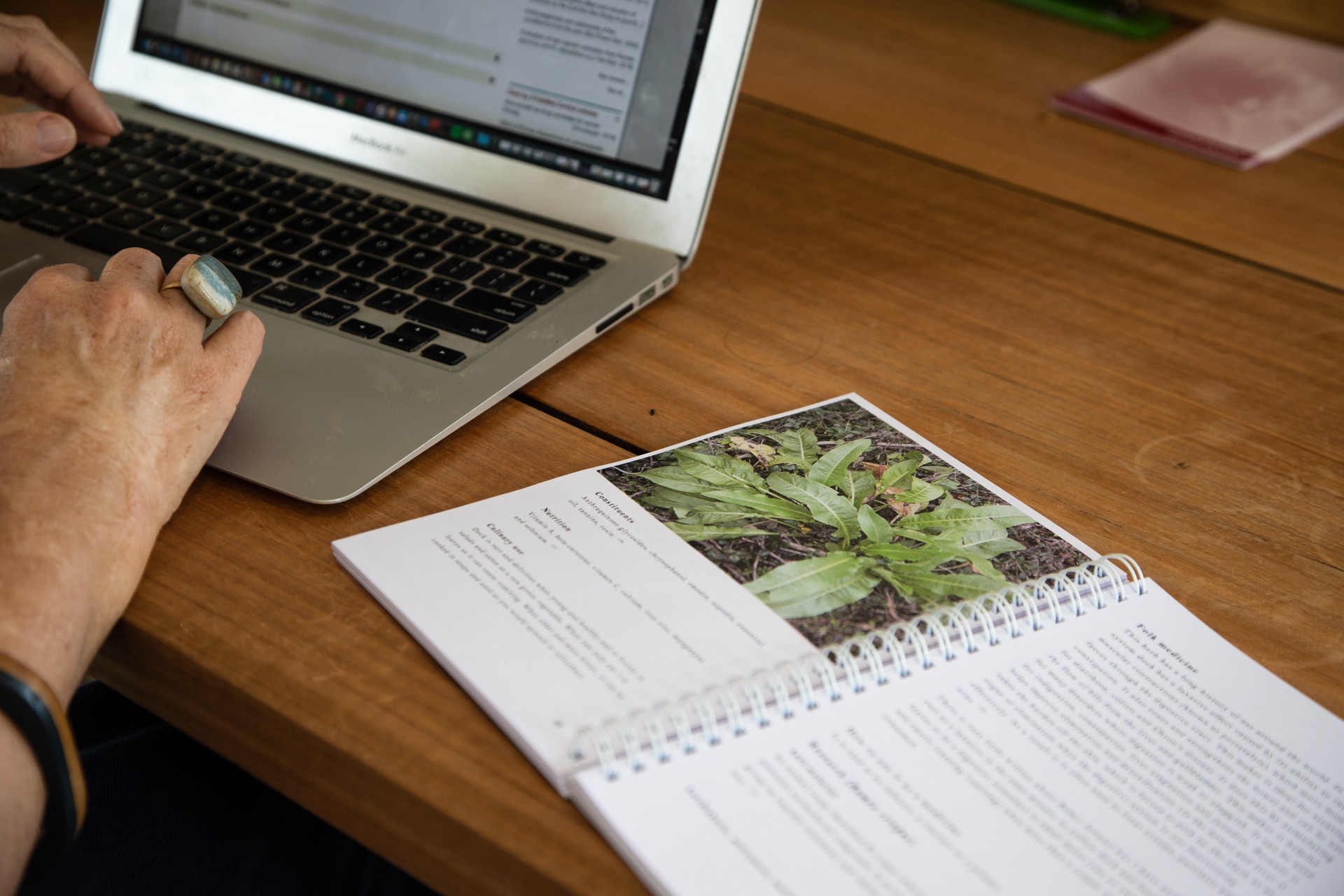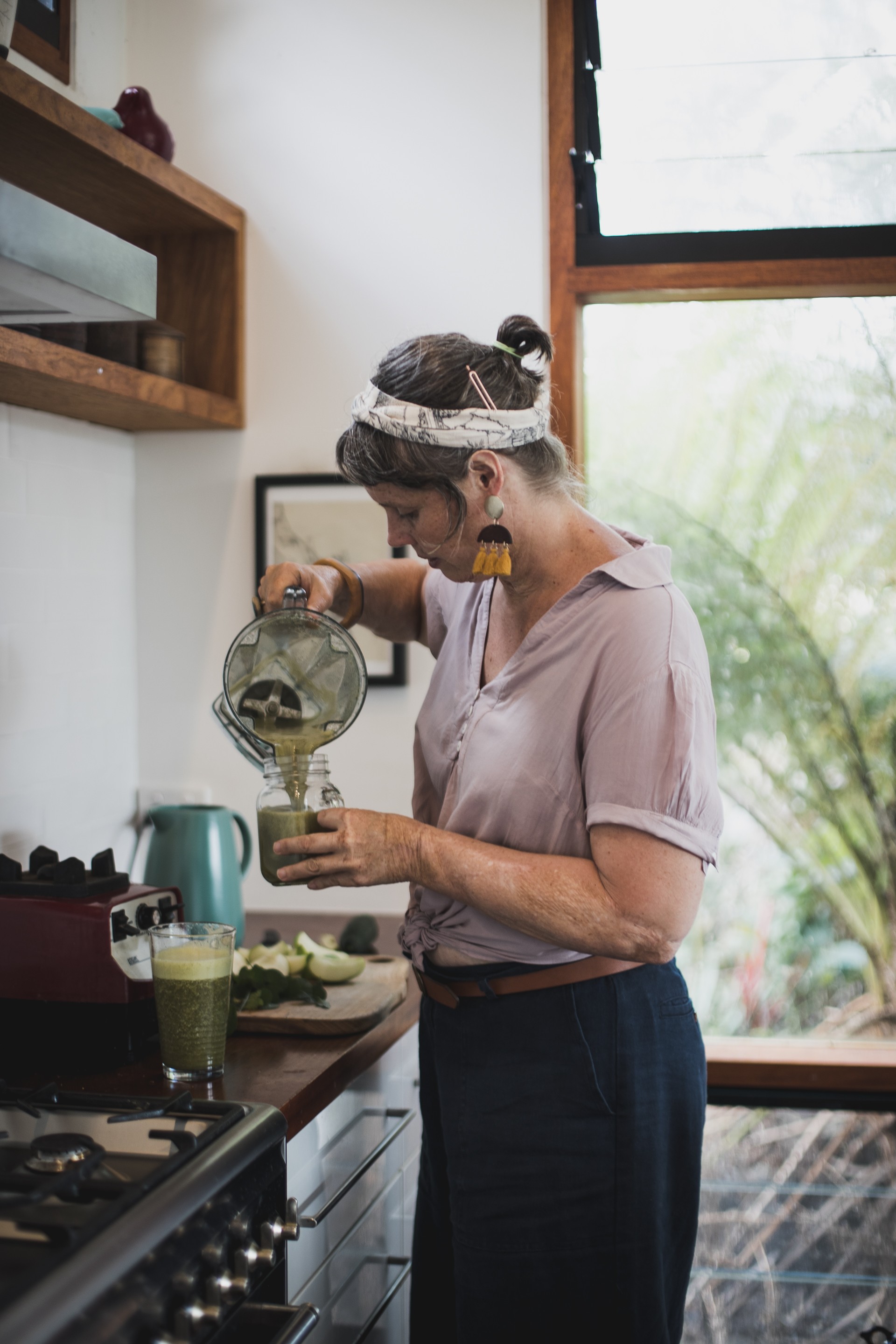Foraging from your local area is a growing trend around the world right now with top chefs and hip new restaurants serving ‘wild edibles’ to their diners. But it’s actually not at all a new concept – humans have always been hunters and gatherers, collecting food for sustenance and medicine.
Wild harvesting has a variety of advantages, not only physically but also for mental health, as it’s a way to practice mindfulness and spend more time in nature. We chat to Heidi Merika, who is a naturopath, medical herbalist, and wild harvester with a passion for educating others about the medicinal, nutritional and emotional benefits of plants.
LU: Wild food foraging has become quite the trend in the past few years but you’ve actually been doing it since you were a child. Can you tell us how you were first introduced to foraging and using wild plants for food and medicine?
HM: My mother introduced me to wildcrafting. When I was about eight years old she started doing a botany degree and was learning about lots of different plants and was really interested in the ones that grew around us that we could use for food. As a single mother, money and food was always in short supply so she was keen to explore anything that would help supplement our diet. In Tassie at that time there were also lots of fruit trees everywhere so we would often collect fruit off the trees on our way to or from school. So I grew up always looking around me at the food that was growing in the streets or paddocks around us, knowing that it was a valuable food source.


LU: You’ve said that by educating people about wildcrafting they have access to the cheapest, simplest and most available medicine on the planet. Can you tell us more about how you are helping to educate others?
HM: I have been running workshops and giving talks and lectures on this topic for about six years now. I have also just recently completed a book on the topic. Sometimes when I see patients from my home clinic I will take them into the garden after the consult and show them a plant they can use as food or medicine. People don’t realise how much is right there in your backyard.
LU: Are there other reasons you feel it’s important to educate more people about wildcrafting?
HM: I think wildcrafting should be a part of everyday life. In most countries, particularly Asia, Africa and parts of Europe, it still is. The main source of greens are the ones that grow wild in that area and the main fruits come off the trees around them. All wild plants have incredible phytochemicals that are not present in cultivated vegetables. Pretty much all of them contain constituents that kill cancer cells and protect against heart disease and diabetes. We are suffering a major decline in health as a result of switching to cultivated foods.
Another impact is that we become desensitised to nature, we lose trust in it and become fearful of it. This lack of connection allows us to lose track of whats important and we start to value money, jobs and economic growth over nature, animals and people. Its insidious. When we need money to get our food then money becomes overly important, but if our food is free and just grows around us then we know that nature is more important than money, that our survival, health and happiness depend on a healthy environment rather than a strong economy.

LU: What are some examples of wild herbs people might find in their garden or locally, with medicinal or health benefits?
HM: Oh wow! I have just written a 300 page book on that! Not sure how to condense it but some very simple examples are dandelion for liver and kidneys, chickweed for inflammation and lymphatics, farmers friends for inflammation and blood sugar regulation. It depends where you live but most people will have healing plants in their backyard.
LU: What common heath ailments can be helped by herbs instead of conventional medicine and how can people use them in their daily life?
HM: You can use purslane as a sedative to help you sleep, you can use tropical chickweed or asthma weed (Euphorbia) or plantian (both the broad leaf one and the ribwort) for coughs and colds. Nasturtiums are also a great antibiotic against cold and flus. Again there are so many its hard to choose.

LU: What are some basic herbs that are easy to grow and people could use daily?
HM: I like to think of the old folk song [by Simon and Garfunkel], “parsley, sage, rosemary and thyme”. Really, that’s a pretty solid medicine chest right there! These can be used as food or medicine or both. Parsley can be used for reducing inflammation, thinning the blood or promoting blood flow and circulation, improving immunity and fighting cancer. Sage is used for sore throats and excesses secretions like drying up breast milk or night sweats. Rosemary is helpful in improving memory and circulation and in liver detoxification. And thyme is an effective antimicrobial for infections.
LU: Not knowing what you are doing and how to recognise plants could also be a little dangerous; what is your advice to people who want to start foraging and wildcrafting?
HM: There is a little bit of danger so yes, be sensible and do your research. Finding people to show you plants is always the best or buy some good guide books. Also, there are really good foraging groups on Facebook or online now so you can post pictures of plants you are unsure about to make sure you have the right thing. If I’m unsure I will usually check a couple of sources to make sure everyone is saying the same thing. If you are getting mixed results then wait till you find one that is consistently affirmed.

LU: You have a green smoothie you make with various foraged plants, can you share the recipe with us and the health benefits?
HM: It all depends what’s around at that time of the year. The most common things that end up in it are:
- Chickweed – Lymphatic cleanser, high in vitamin C, breaks down fat
- Farmers Friends – Anti-cancer, anti-diabetic, anti-inflammatory
- Nodding top – Liver protective
- Gotu Kola- memory and circulatory tonic and wound healer
- Dandlion – Liver and kidney support
- Clivers – Lymphatic cleanser
All these plants are packed full of protein, vitamins and minerals and antioxidants.
I forage around 3 or 4 of the above plants using about a handful of each, then add 1-2 green apples, pears or cucumbers and a bit of ginger or mint (depending if I feel to add a warming or cooling effect) then some water to taste.

Find out more about wildcrafting with Heidi Merika here.

